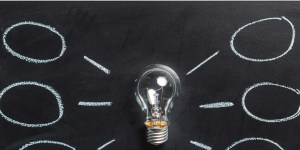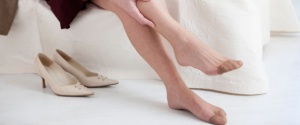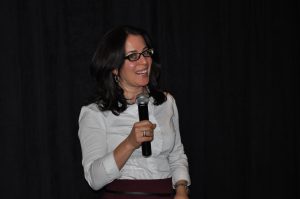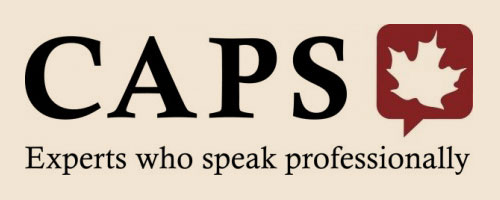10 Things You Must Do To Be Awesome On the Day of Your Presentation
Your presentation is planned. You’ve prepared, rehearsed, you’re wearing your ‘power clothes,’ and you’re saying the silent prayer shared by speakers all over the world: “May my technology work as it’s supposed to, may I remember all my important points as I did in my second-to-last rehearsal which was the best one yet, may the audience laugh at all the right moments, may people think I’m brilliant, may I get lots of business from this….in short, may I be awesome in every way!”

1. Show up early. Get there at least an hour early. Set up your technology, organize your handouts (if you have any) well before any attendees show up, and make sure everything works. Check out the layout of the room, and decide in which area of the room (or stage) you’ll be doing most of your speaking. By the time your audience starts to show up, the only thing that should be left for you to do is to greet them with a big smile.
2. Bring backups of your backups. If you’re using slides for your presentation, you can’t always expect that technology will work as planned. When I’m giving a presentation that requires slides, I’ve got them on my computer, I’ve saved them to two memory keys, and I’ve uploaded it to Dropbox. I bring extra batteries for my wireless presenter. There have been times when I brought my own projector to some presentations, although more reliable technology among most locations hosting speakers is quickly making that unnecessary (but still, it pays to be prepared). Be ready with some backups in case something goes wrong.
3. Speaking of backups… Is your wardrobe going to facilitate your awesomeness? When I know that I’ve got a full day of speaking, training or networking in front of me, I’ll bring backup shoes. Of course, this depends on how long you anticipate to be on your feet. If you’re giving a presentation at work for 30-60 minutes, and know that you’ll be 
4. Go to the washroom. Seriously. We can get so caught up in the technology and room preparations that this very important task gets thrown to the wayside. About 15-20 minutes before your start time, and optimally before your audience starts showing up, take a trip to the loo! Do your business, check yourself top to bottom in the mirror to make sure that everything is zipped up, check your teeth, check your nose, and then get back to the room! There’s nothing worse than thinking that your audience can’t take their eyes off you because of your magnificent presence and fascinating content, only to find out that remnants of spinach from that morning’s green smoothie is lurking between your teeth. Let’s just say that this incident happened to “a friend,” and we’ll leave it at that, shall we?
5. Meet the people. Now that you’re back from the washroom and in shape from top-to-bottom, greet your audience as they walk through the door. When you have a chance to connect with some people before your presentation, you’ll have ‘broken the ice’ and will no longer be speaking to a group of strangers. And if it’s a work presentation to your colleagues whom you already know, at least they’ll feel like they’ve been warmly welcomed, which can do wonders to elevate the atmosphere of a room.
6. Say YES to the microphone. If you’re going to be speaking in a large room and you are offered a microphone, take it. If there’s a doubt that people may not be able to hear you, take it. If you feel uncomfortable with a microphone and are sure that you can speak loudly enough throughout the presentation, you are wrong, so you should take it. Whether it’s a handheld mic or a lapel mic, you will get over the awkwardness as soon as you see

It may have LOOKED funny, but at least the audience was able to hear me!
the pleased looks of your audience as they don’t have to struggle to hear your presentation loudly and clearly. Most places will offer a lapel microphone, which are easy to use — just put it on your lapel, and talk. Even if you have to use a handheld mic, it may seem awkward at first, but you’ll very quickly get used to it. I once attended a presentation by a speaker who I was very excited to listen to, and he opted out of using the handheld microphone with the oh-so-annoying “It’s OK, I’ll speak loudly” comment. The room was too big, he wasn’t able to maintain his volume for the full 45 minutes, there was background noise from a room next door, I had to strain to hear what he was saying, I missed several pieces of his talk, and in the end, I was fully and completely frustrated. Don’t let your discomfort with a microphone get in the way of how well the audience can hear you. So to recap: If you’re offered a microphone…all together now….TAKE IT!
7. Have water nearby. If you’re nervous, if you speak for a long time, or if you haven’t drunk enough throughout the day, speaking can suck the moisture right out of you. This will be uncomfortable for you when speaking, and may even result in a “tsking” noise when you speak. The good news is, all you need to do is have some water nearby. 
8. Watch your time. It can be hard to keep track of time when you’re speaking. There isn’t always a clock on the wall in the room, so you’ve got to be prepared. Timing is YOUR responsibility. I often use a little travel alarm clock set up right in front of my computer, which is a discreet and effective. Other times, I’ve set my wristwatch on the table right next to my computer, or on the podium, or wherever there’s a flat surface. Do not check your smartphone or your watch (if it’s on your wrist), because those are VERY distracting movements – and very unprofessional.
9. Ever heard of Power Posing? In the very famous TED talk, “Your body language shapes who you are,” Amy Cuddy shows how “power posing” — standing in a posture of confidence, even when we don’t feel confident — can affect testosterone and cortisol levels in the brain, and might have an impact on our chances for success. In essence, when you pretend to be powerful, you are more likely to actually feel powerful. Yes, I’ve tried it. In private, usually in a bathroom stall (see point #4, above). I felt a bit silly. But when I was also feeling nervous for the talk, feeling silly and laughing at myself, even for a few seconds, actually did relieve some stress and make me feel better. It may or may not work for you, but give it a try!
10. Have faith. If you’ve prepared, practiced, and done everything on this list, have faith that everything will be as it should be. Remember that your presentation doesn’t have to be perfect. But it does have to show your audience that you’ve put in time preparing something specific for them and their needs, something that is structured and engaging, and is a valuable use of their time (need to create more structure and focus in your presentations?). And finally, in the days (or moments) before your presentation, visualize yourself at the front of the room, visualize your success, and even if the unexpected happens, you’ll be able to learn from it and make your next presentation even more successful.
The day of your presentation can be full of surprises. But when you’re prepared for them, the surprises won’t throw you off. And your speaking awesomeness will be evident for everyone to see.
(A condensed version of this article also appears in the Huffington Post).




Thanks Suzannah. Love the reference to Wonder Woman and Amy Cuddy. Very helpful article these days with lots of clients speaking on TV and Radio! I will definitely share. Thanks
Thanks Suzannah
I thank you for such nice tips for giving a nice presentation.
You’re so welcome! Glad that you found it useful.
Too often the simple or obvious gets overlooked… your checklist is an amazing reminder of just what not to overlook the day of! Do it and you will feel prepared…an instant confidence booster…made simple thanks to Suzannah Baum! Bonus: also — a mindfulness-friendly approach to speaking because to encourages presence! Love it.
Thank you Tina! There’s so much self-talk involved when we put ourselves in the challenging public speaking situations, that mindfulness now HAS to be included. Thank you for your kind feedback.
Thank you Suzannah,
This will be a helpful tool for my students.
You’re so welcome! I hope your students will find it valuable as well.